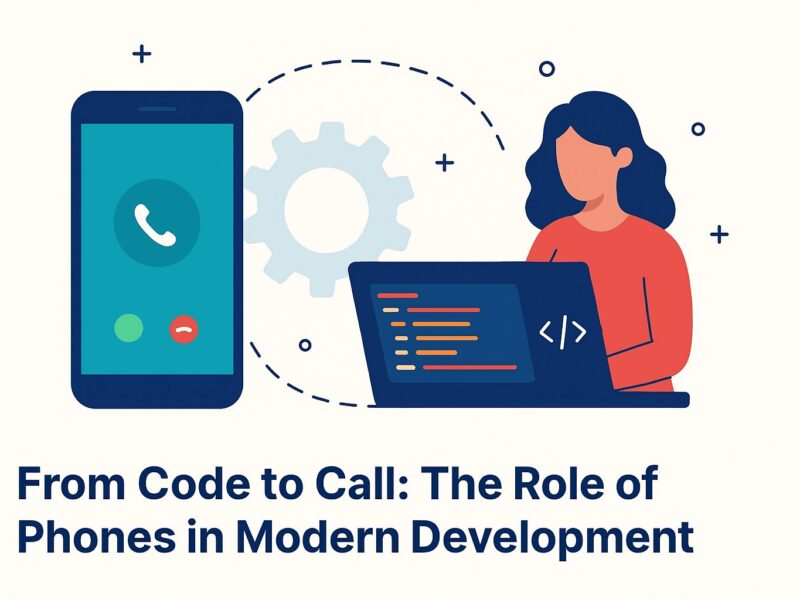Introduction
The Internet of Things (IoT) is a network of physical devices, vehicles, buildings and other items—embedded with electronics, software, sensors and network connectivity that enables these objects to collect and exchange data. IoT can be used in industrial applications such as manufacturing, healthcare and energy management. It can also be used in consumer applications like smart homes and wearable technology.
As designers consider how their products will connect with people’s lives through the use of IoT technologies, they should also think about how these technologies affect the user experience (UX).
What is the Internet of Things (IoT)?
The Internet of Things (IoT) is a network of connected devices that collect and exchange data. These devices can be anything from computers, smartphones, TVs, watches and even fridges.
The concept driving IoT is to establish a network where all devices can be linked to each other via the internet, operating seamlessly in harmony. The primary objective of this technology is to simplify our lives by connecting these devices, enabling them to interact autonomously, without requiring constant human input. Moreover, it facilitates us in obtaining information about our environment, enabling us to make informed decisions in various situations, such as identifying when our vehicle needs maintenance.
The benefits associated with this technology are endless: we’ve already seen some amazing advancements since its inception including self-driving cars; smart homes where appliances turn off automatically when not being used anymore; wearable technology such as fitness trackers or smartwatches which keep track over important stats like heart rate while exercising etcetera…
How does UX design interact with IoT?
UX design is a critical part of IoT design, and it’s the process of designing the user experience of a product or service. It’s also known as User Experience Design (UXD).
The main goal of UX is to enhance user satisfaction and loyalty through improved usability, accessibility, and pleasure.
What are the unique considerations when designing for IoT?
There are many differences between designing for IoT and designing for mobile or desktop. In order to design an effective user experience, you need to have a clear understanding of these differences.
When designing for IoT, you’ll need to think differently than when designing anything else. This means approaching your projects with a new mindset, using different processes and toolsets, and making sure that all the stakeholders in an IoT project understand what makes this particular medium unique–and why it requires such careful consideration when building products or services around it.
What are the requirements for designing for the Internet of Things?
As you design your IoT product, it’s important to keep these requirements in mind.
Understand the user. Who is using your product? What are their needs and desires? How do they use it, and how often do they interact with it? When developing a smart home system that assists individuals in staying organized by reminding them to perform tasks such as taking out the trash or cleaning up after dinner, it’s crucial to consider the appropriate triggers for the users’ lifestyle. For instance, push notifications based on location (such as entering or leaving a particular area) may suffice as a straightforward reminder mechanism. Or maybe there’s some other way that works better–it depends on what works best for each individual user!
Understand context. Where does this person live/work/play/etc.? How does this environment affect how this person interacts with technology like yours? For example: if I’m out hiking through mountains all day long (and therefore have no cell service), then my GPS tracking device won’t work very well either…
What are the recommended graphics for the Internet of Things?
The Internet of Things is a complex topic, and it’s important to understand the right data graphics for the right audience. There are three main considerations to keep in mind:
The purpose of your graphic–what do you want your audience to learn? This will help determine what type of graph you should use and how much information it should contain.
Who your audience is–do they have any particular interests or needs? This will help determine how technical or accessible they need your graphic to be (and whether there are any cultural expectations around visuals).
How busy their schedule is–how much time do they have available for reading? If it’s not much time at all, then maybe consider using an infographic instead!
What are the principles of IoT system design?
IoT system designers must consider the following principles:
Scalability. As the number of connected devices increases, it’s essential that an IoT system can scale up accordingly. For instance, suppose you have 1,000 cars connected to the system and 10,000 individuals using the public transportation system in your city. In that case, additional servers may be necessary to manage the increased volume of data.
Adaptability. The physical world is constantly changing–and so should your IoT system! If you’re designing a fitness tracker app for runners who use GPS trackers while they run outdoors in natural light conditions, but then some users start using it indoors on treadmills where it’s darker and harder for the smartphone camera sensor to see them clearly enough for accurate tracking purposes…well…you get the idea; this could lead either way depending on whether or not there are any better options available yet which might serve better than just letting things stay as-is (and hoping everything works out okay). But even if there aren’t any improvements right now yet either way still seems pretty risky too…”
How important is research in IoT design?
Research is a critical part of the design process. It’s important because it helps you understand the problem and see possible solutions to it, which you might not have thought of on your own. You can also use research to find out what people want and need from the product, so that when they use it they get exactly what they need.
If there’s one thing I’ve learned in my time as a designer, it’s this: Research should be an ongoing part of any project–not just something you do at the beginning or end after all of your hard work has been done!
What are the security considerations for IoT design?
As you design your IoT product, it’s important to consider the security of your data and systems. There are many potential threats that could compromise your system or user data, including:
Malware
Phishing attacks
DDoS attacks (distributed denial-of-service)
In order for users to trust your product, they need a sense of control over their information. You should be aware of possible security threats and how they could be mitigated by using best practices in IoT design, such as encryption and authentication mechanisms. You should also think about how third parties will access any personal information collected through your device or service–and whether those third parties have adequate safeguards in place against unauthorized access or disclosure of this sensitive data
How does data management play a role in IoT design?
It’s important to understand that data management is an essential part of IoT design.
IoT projects collect large volumes of data, and they often do so in real time. This means that the system has to be able to handle the influx without slowing down or crashing. If you don’t have a good understanding of how your system will handle this load, it could cause problems for your project later on down the road–or even prevent it from launching at all!
Why is scalability important for IoT design?
Designing for scalability is crucial in the context of the global phenomenon that is the Internet of Things (IoT). With the exponential growth of IoT in recent years, it’s imperative that we create a system that can keep pace with this rapid expansion, without compromising on security or data management. The reason scalability is essential for IoT is that each device connected to an internet-based system has its unique set of requirements. Therefore, every device must be capable of operating independently while maintaining the ability to communicate with other devices within its network.
While designing for IoT can be complex, it’s also an exciting, new frontier.
Designing for IoT can be complex, but it’s also an exciting and new frontier for designers. The world is changing fast, and IoT has the potential to change things even faster. We need to be prepared to learn new skills as we adapt to these changes.
IoT provides a great opportunity for designers to make a difference in the world by helping people solve problems they didn’t even know they had before now — problems that have been around forever but were never really solvable until now because of technology like sensors and cloud computing infrastructure being cheap enough that everyone can use them (or at least most people).
Conclusion
We hope this article has given you a better understanding of the Internet of Things and how to design for it. The world is changing at an unprecedented rate, and IoT will be a big part of that future. It’s time for designers to get involved in this exciting new field so that we can help shape what our world looks like tomorrow!


